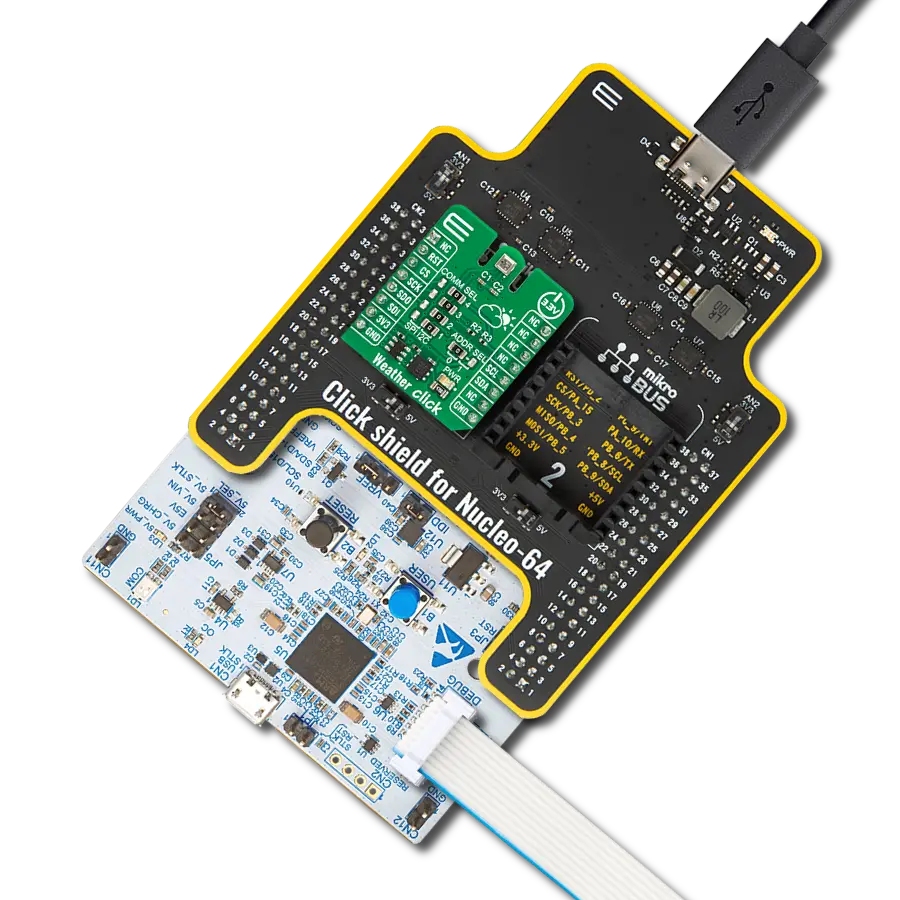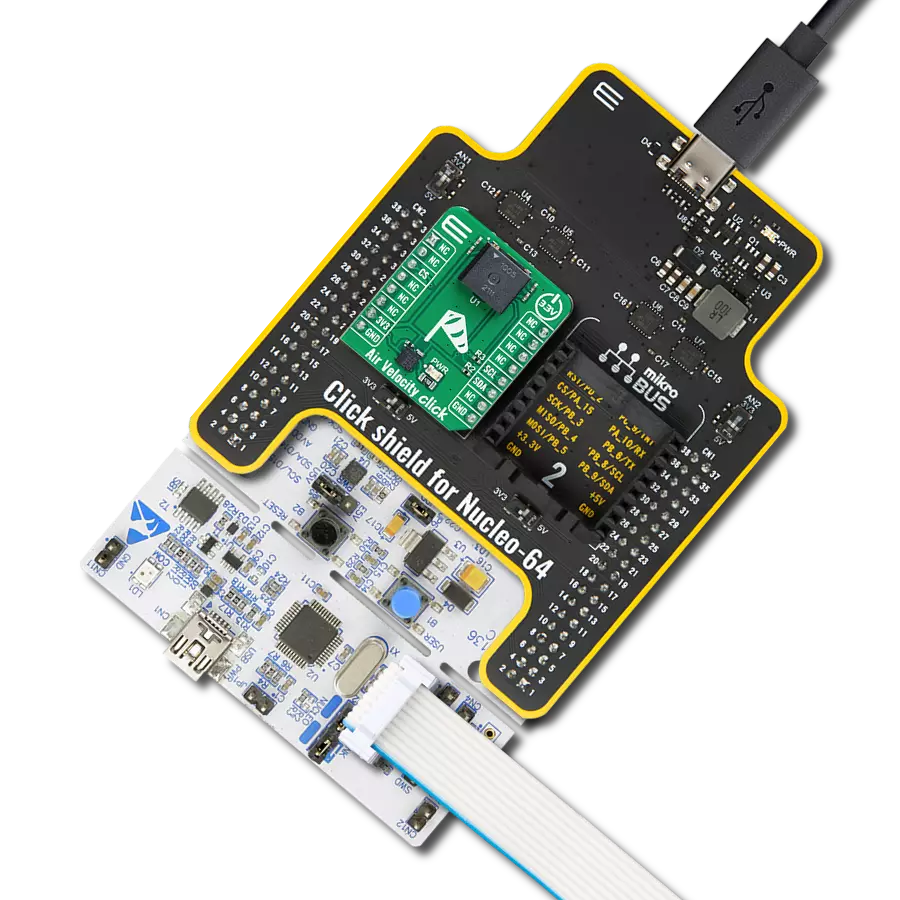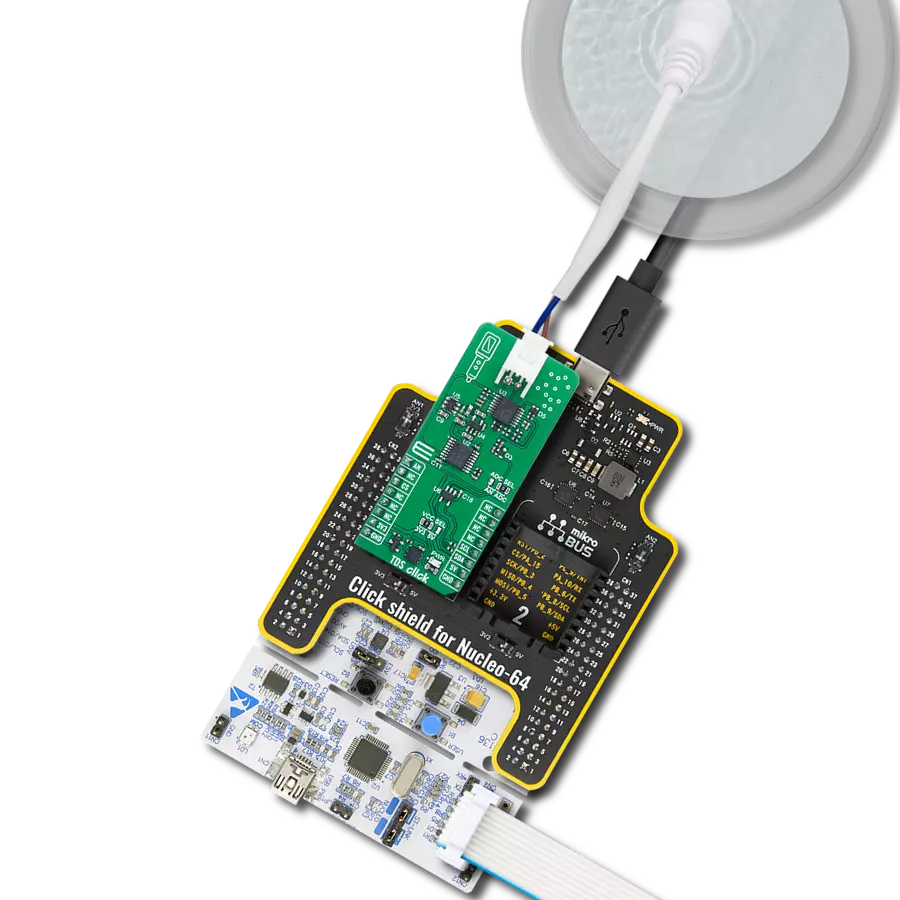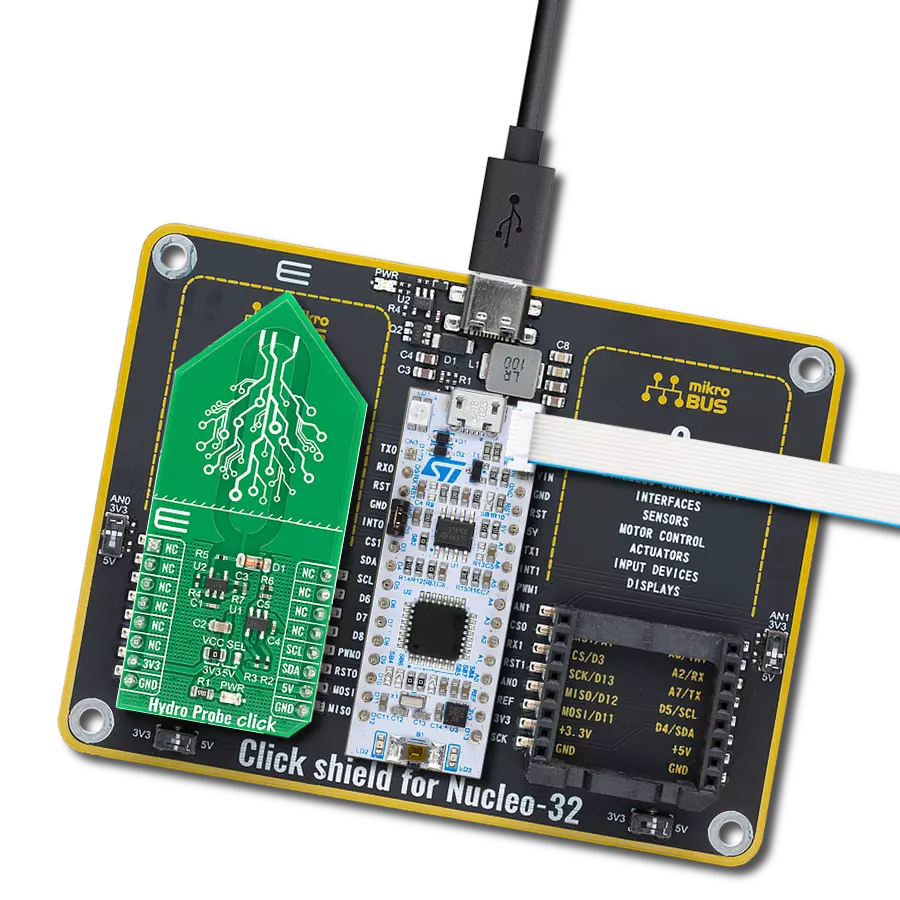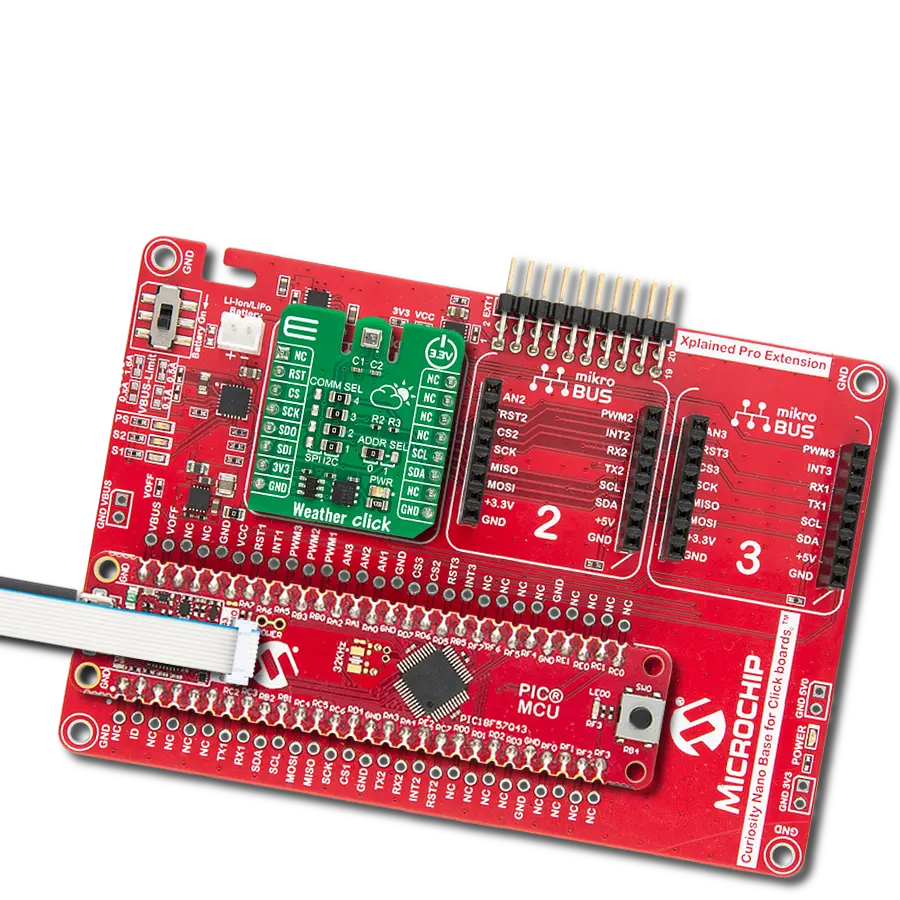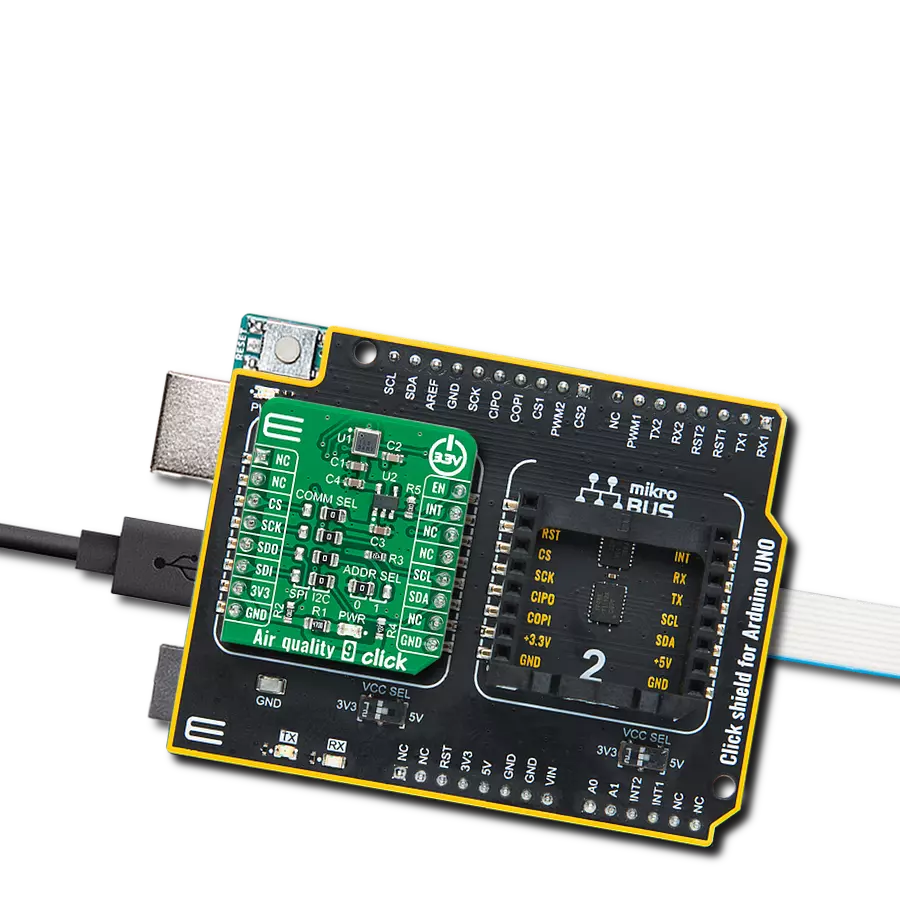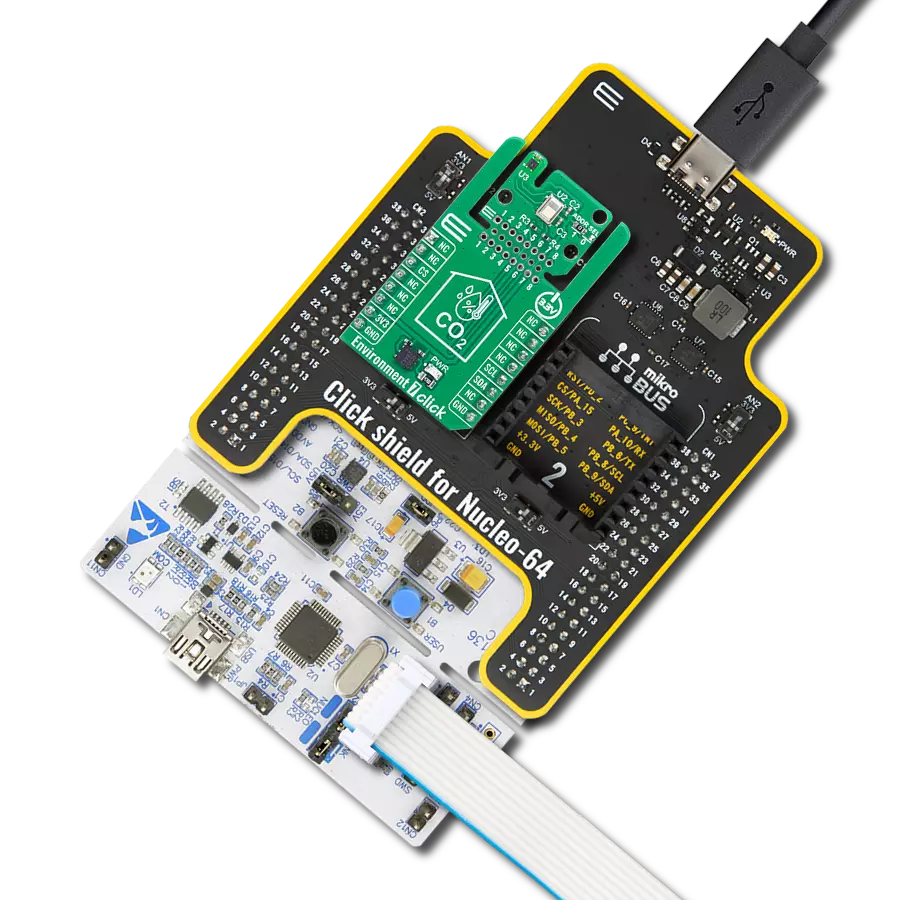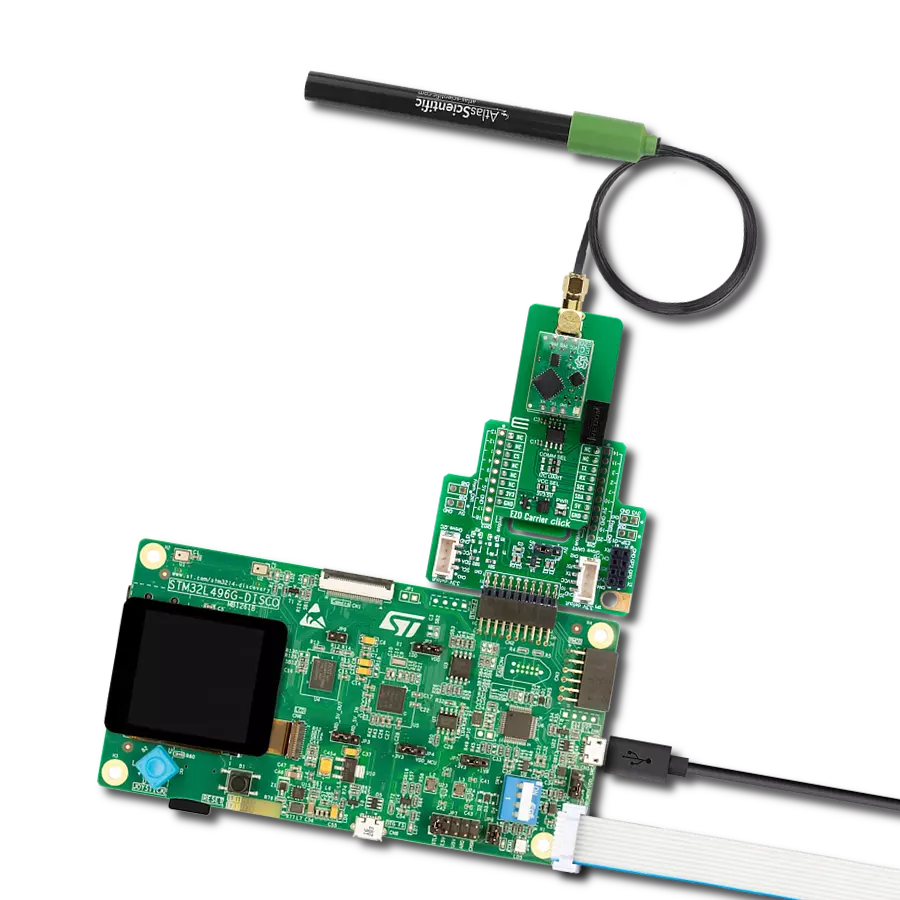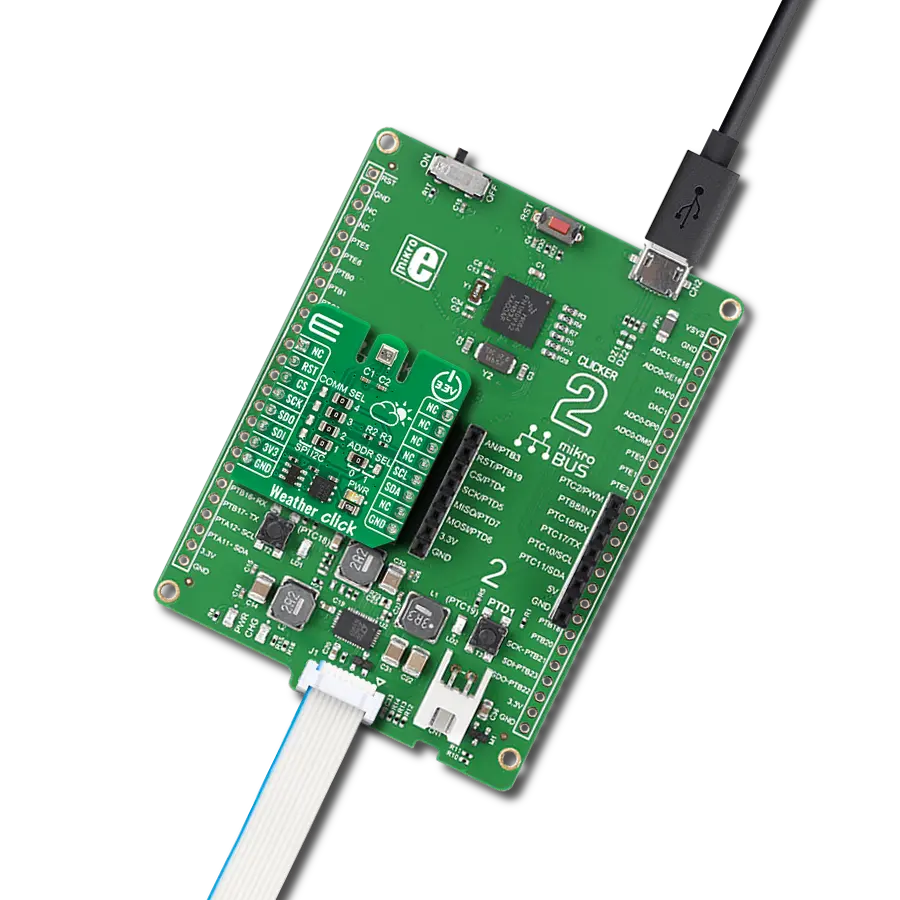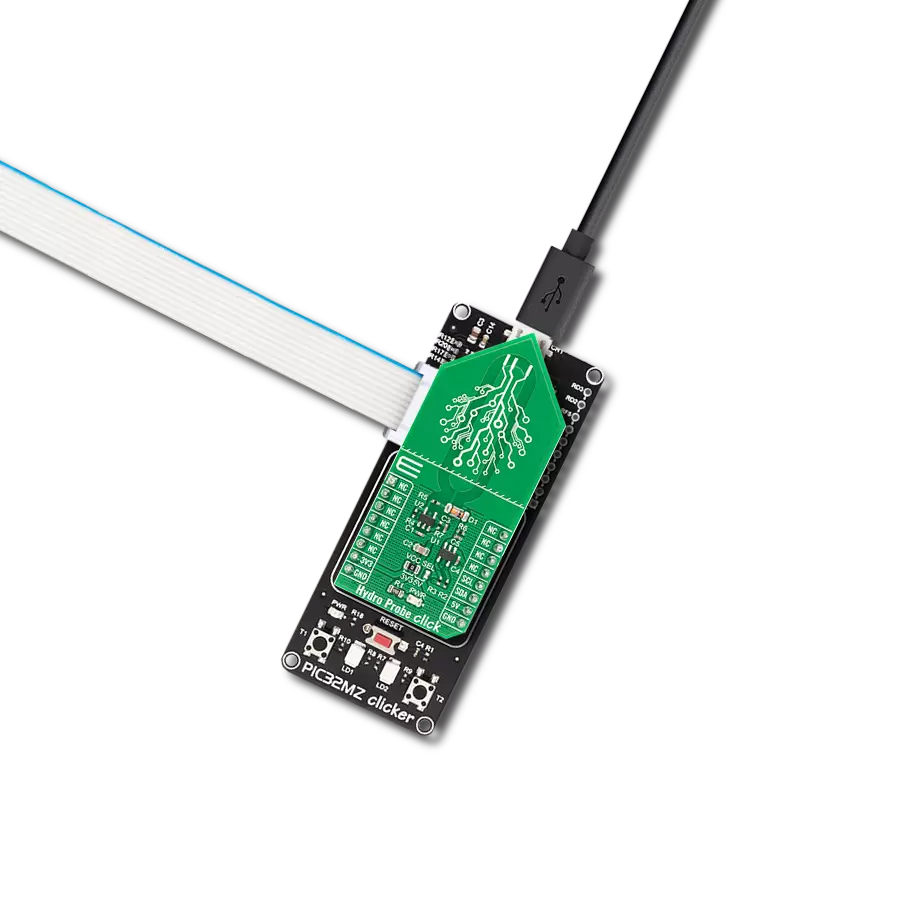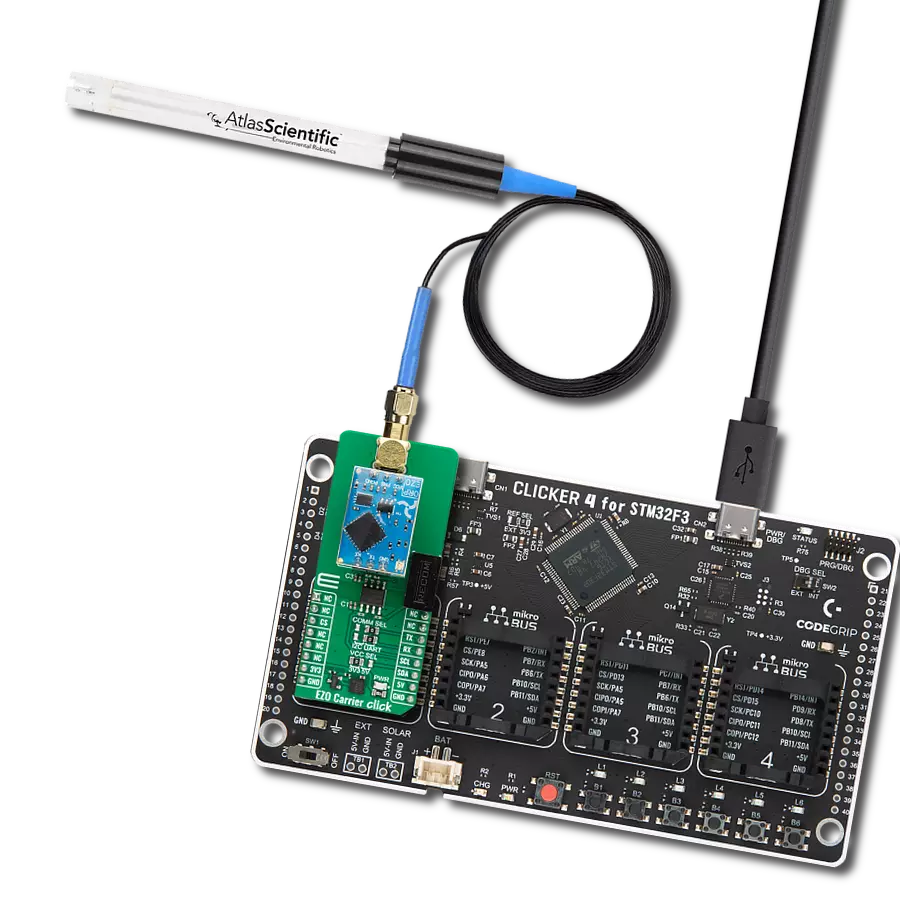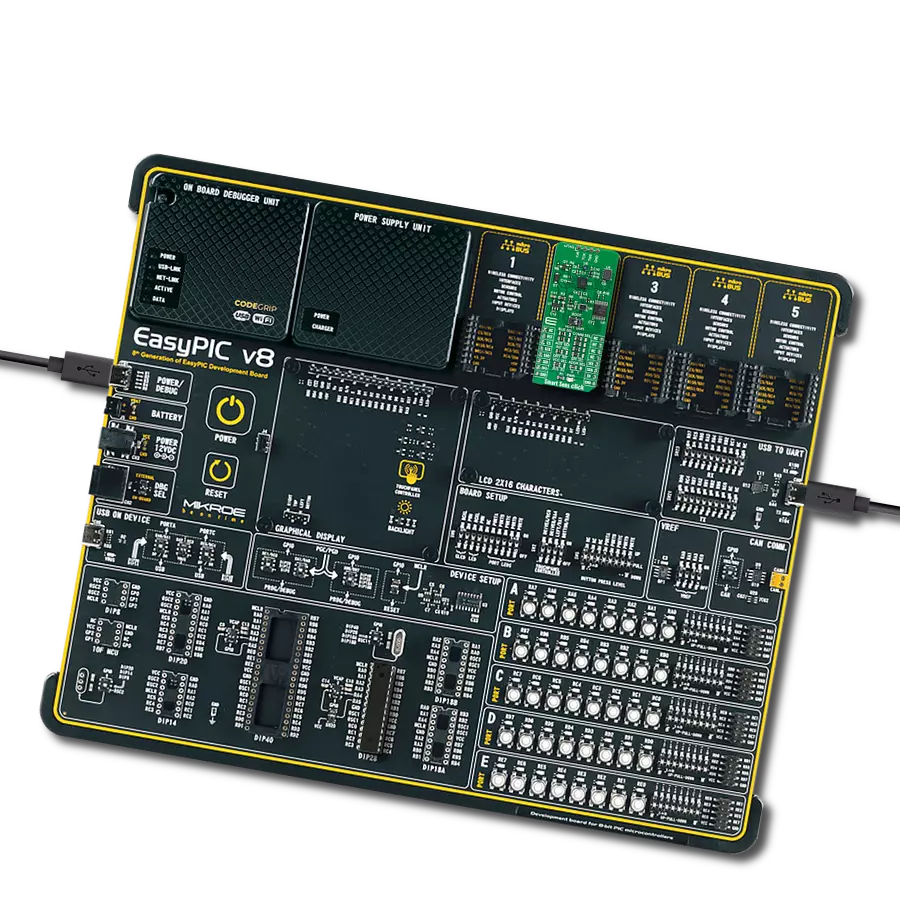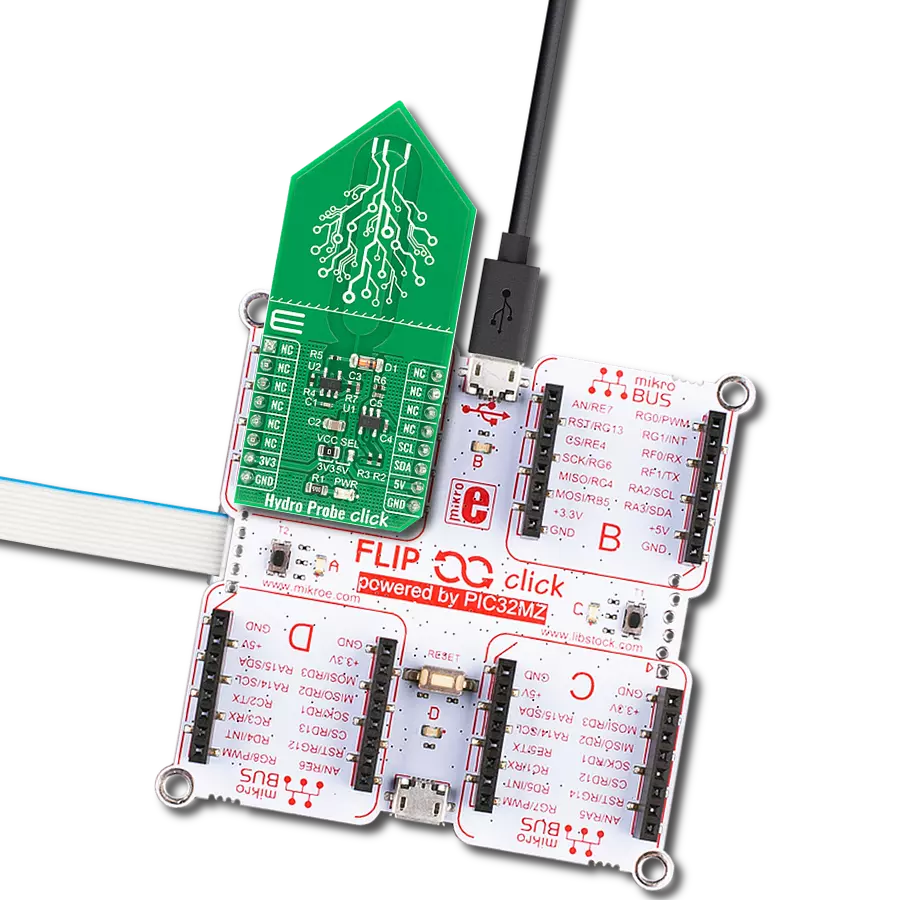Indoor air quality monitor based on AI-enhanced gas sensing technology perfect for homes, offices, HVAC systems, and air purifiers
A
A
Hardware Overview
How does it work?
Air Quality 12 Click is based on the RRH46410, a digital gas sensor module from Renesas designed for monitoring indoor air quality. This module integrates advanced sensing technology to detect and measure total volatile organic compounds (TVOC), indoor air quality (IAQ), and estimated carbon dioxide levels (eCO2) with precision and reliability. Tailored for indoor air monitoring applications, this sensor module combines a MEMS gas sensing element, a CMOS signal conditioning IC, and an onboard microcontroller, offering a complete, self-contained gas detection solution. Thanks to its low operating power consumption and multiple operational methods, this solution is ideally suited for applications such as indoor air quality monitoring, ensuring healthy environments in homes, offices, and public buildings, and detection of hazardous materials and harmful fumes, including those from construction materials, and automation of air quality-based devices. The RRH46410's MEMS gas sensing element incorporates a heater on a silicon-based structure and a metal oxide (MOx) chemiresistor, capable of
detecting changes in conductivity caused by gas concentrations. The module's signal conditioner regulates the sensor temperature and processes MOx conductivity measurements, while the integrated microcontroller generates a calibrated digital output, eliminating the need for complex data processing on the user's host MCU. The RRH46410 stands out for its intelligent design, leveraging artificial intelligence (AI) and a machine-learning algorithm to produce accurate air quality measurements. It can detect TVOC contaminants based on established international indoor air quality standards while responding effectively, though not selectively, to hydrogen (H₂) within the parts-per-million range. Its fast response time, measured in seconds, ensures near-instantaneous readings without requiring direct airflow onto the sensor. However, while it can detect gases like carbon monoxide (CO), it is not approved for safety-critical applications and should not be relied upon for life-saving use cases. This Click board™ supports both UART and I2C interfaces for communication with the host MCU. The UART interface operates at a
default baud rate of 115200bps, enabling efficient data transmission and exchange, while the I2C interface supports clock frequencies of up to 400kHz for flexible integration with various systems. In addition to the interface pins, the board includes other control pins such as the RST pin for resetting the module, the INT pin for real-time alerts (set HIGH when data is available and LOW after data is read), and the GP1 pin, which controls the red GP1 LED. This user-configurable LED serves as a visual indicator for various scenarios based on the user's needs. The board also features two unpopulated pins labeled GP3 and GP4, which are general-purpose I/O pins configured as always-inputs and lacking internal pull-ups, providing additional versatility for custom applications. This Click board™ can be operated only with a 3.3V logic voltage level. The board must perform appropriate logic voltage level conversion before using MCUs with different logic levels. It also comes equipped with a library containing functions and example code that can be used as a reference for further development.
Features overview
Development board
Arduino UNO is a versatile microcontroller board built around the ATmega328P chip. It offers extensive connectivity options for various projects, featuring 14 digital input/output pins, six of which are PWM-capable, along with six analog inputs. Its core components include a 16MHz ceramic resonator, a USB connection, a power jack, an
ICSP header, and a reset button, providing everything necessary to power and program the board. The Uno is ready to go, whether connected to a computer via USB or powered by an AC-to-DC adapter or battery. As the first USB Arduino board, it serves as the benchmark for the Arduino platform, with "Uno" symbolizing its status as the
first in a series. This name choice, meaning "one" in Italian, commemorates the launch of Arduino Software (IDE) 1.0. Initially introduced alongside version 1.0 of the Arduino Software (IDE), the Uno has since become the foundational model for subsequent Arduino releases, embodying the platform's evolution.
Microcontroller Overview
MCU Card / MCU
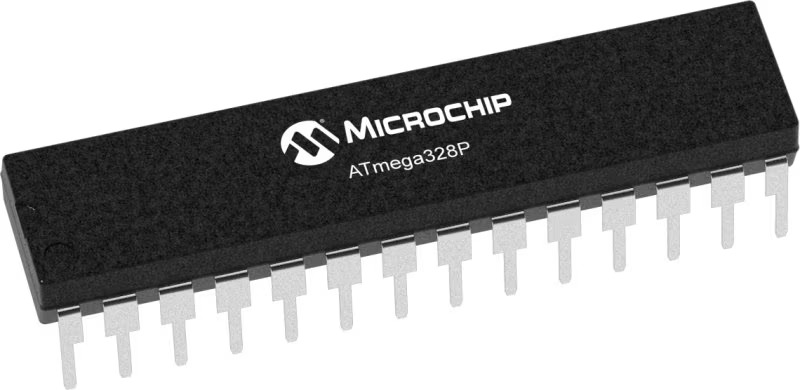
Architecture
AVR
MCU Memory (KB)
32
Silicon Vendor
Microchip
Pin count
28
RAM (Bytes)
2048
You complete me!
Accessories
Click Shield for Arduino UNO has two proprietary mikroBUS™ sockets, allowing all the Click board™ devices to be interfaced with the Arduino UNO board without effort. The Arduino Uno, a microcontroller board based on the ATmega328P, provides an affordable and flexible way for users to try out new concepts and build prototypes with the ATmega328P microcontroller from various combinations of performance, power consumption, and features. The Arduino Uno has 14 digital input/output pins (of which six can be used as PWM outputs), six analog inputs, a 16 MHz ceramic resonator (CSTCE16M0V53-R0), a USB connection, a power jack, an ICSP header, and reset button. Most of the ATmega328P microcontroller pins are brought to the IO pins on the left and right edge of the board, which are then connected to two existing mikroBUS™ sockets. This Click Shield also has several switches that perform functions such as selecting the logic levels of analog signals on mikroBUS™ sockets and selecting logic voltage levels of the mikroBUS™ sockets themselves. Besides, the user is offered the possibility of using any Click board™ with the help of existing bidirectional level-shifting voltage translators, regardless of whether the Click board™ operates at a 3.3V or 5V logic voltage level. Once you connect the Arduino UNO board with our Click Shield for Arduino UNO, you can access hundreds of Click boards™, working with 3.3V or 5V logic voltage levels.
Used MCU Pins
mikroBUS™ mapper
Take a closer look
Click board™ Schematic

Step by step
Project assembly
Software Support
Library Description
This library contains API for Air Quality 12 Click driver.
Key functions:
airquality12_get_sensor_info- This function reads the device product ID, firmware version, and tracking number.airquality12_get_int_pin- This function returns the INT pin logic state.airquality12_get_measurement- This function reads the sensor measurement results.
Open Source
Code example
The complete application code and a ready-to-use project are available through the NECTO Studio Package Manager for direct installation in the NECTO Studio. The application code can also be found on the MIKROE GitHub account.
/*!
* @file main.c
* @brief Air Quality 12 Click example
*
* # Description
* This example demonstrates the use of Air Quality 12 Click board by reading the
* IAQ 2nd Gen measurements and displays the results on the USB UART.
*
* The demo application is composed of two sections :
*
* ## Application Init
* Initializes the driver and configures the Click board to the default configuration.
* Then it reads the sensor product ID, firmware version, and the 48-bit tracking number.
*
* ## Application Task
* Checks the data ready interrupt pin and then reads the IAQ 2nd Gen measurements
* and displays the results on the USB UART. The GP1 LED turns ON during the data reading.
* The data sample rate is set to 3 seconds for the IAQ 2nd Gen operating mode, and the first
* 100 samples upon startup should be ignored since the sensor is in the warm-up phase.
*
* @author Stefan Filipovic
*
*/
#include "board.h"
#include "log.h"
#include "airquality12.h"
static airquality12_t airquality12;
static log_t logger;
void application_init ( void )
{
log_cfg_t log_cfg; /**< Logger config object. */
airquality12_cfg_t airquality12_cfg; /**< Click config object. */
/**
* Logger initialization.
* Default baud rate: 115200
* Default log level: LOG_LEVEL_DEBUG
* @note If USB_UART_RX and USB_UART_TX
* are defined as HAL_PIN_NC, you will
* need to define them manually for log to work.
* See @b LOG_MAP_USB_UART macro definition for detailed explanation.
*/
LOG_MAP_USB_UART( log_cfg );
log_init( &logger, &log_cfg );
log_info( &logger, " Application Init " );
// Click initialization.
airquality12_cfg_setup( &airquality12_cfg );
AIRQUALITY12_MAP_MIKROBUS( airquality12_cfg, MIKROBUS_1 );
if ( AIRQUALITY12_OK != airquality12_init( &airquality12, &airquality12_cfg ) )
{
log_error( &logger, " Communication init." );
for ( ; ; );
}
if ( AIRQUALITY12_ERROR == airquality12_default_cfg ( &airquality12 ) )
{
log_error( &logger, " Default configuration." );
for ( ; ; );
}
airquality12_info_t info;
if ( AIRQUALITY12_OK == airquality12_get_sensor_info ( &airquality12, &info ) )
{
log_printf( &logger, " ---- Sensor info ----\r\n" );
log_printf( &logger, " Product ID: 0x%.4X\r\n", info.product_id );
log_printf( &logger, " FW version: %u.%u.%u\r\n", ( uint16_t ) info.fw_ver_major,
( uint16_t ) info.fw_ver_minor,
( uint16_t ) info.fw_ver_patch );
log_printf( &logger, " Tracking number: 0x%.2X%.2X%.2X%.2X%.2X%.2X\r\n",
( uint16_t ) info.tracking_num[ 5 ], ( uint16_t ) info.tracking_num[ 4 ],
( uint16_t ) info.tracking_num[ 3 ], ( uint16_t ) info.tracking_num[ 2 ],
( uint16_t ) info.tracking_num[ 1 ], ( uint16_t ) info.tracking_num[ 0 ] );
log_printf( &logger, " ---------------------\r\n" );
}
log_info( &logger, " Application Task " );
}
void application_task ( void )
{
airquality12_results_t results = { 0 };
if ( airquality12_get_int_pin ( &airquality12 ) )
{
airquality12_set_gp1_pin ( &airquality12, 1 );
if ( AIRQUALITY12_OK == airquality12_get_measurement ( &airquality12, &results ) )
{
log_printf ( &logger, " Sample number: %u\r\n", ( uint16_t ) results.sample_num );
log_printf ( &logger, " IAQ: %.1f\r\n", results.iaq );
log_printf ( &logger, " TVOC: %.2f mg/m^3\r\n", results.tvoc );
log_printf ( &logger, " ETOH: %.2f ppm\r\n", results.etoh );
log_printf ( &logger, " ECO2: %u ppm\r\n", results.eco2 );
log_printf ( &logger, " rel_IAQ: %u\r\n\n", results.rel_iaq );
}
airquality12_set_gp1_pin ( &airquality12, 0 );
}
}
int main ( void )
{
/* Do not remove this line or clock might not be set correctly. */
#ifdef PREINIT_SUPPORTED
preinit();
#endif
application_init( );
for ( ; ; )
{
application_task( );
}
return 0;
}
// ------------------------------------------------------------------------ END
Additional Support
Resources
Category:Environmental




















